
cd_nom
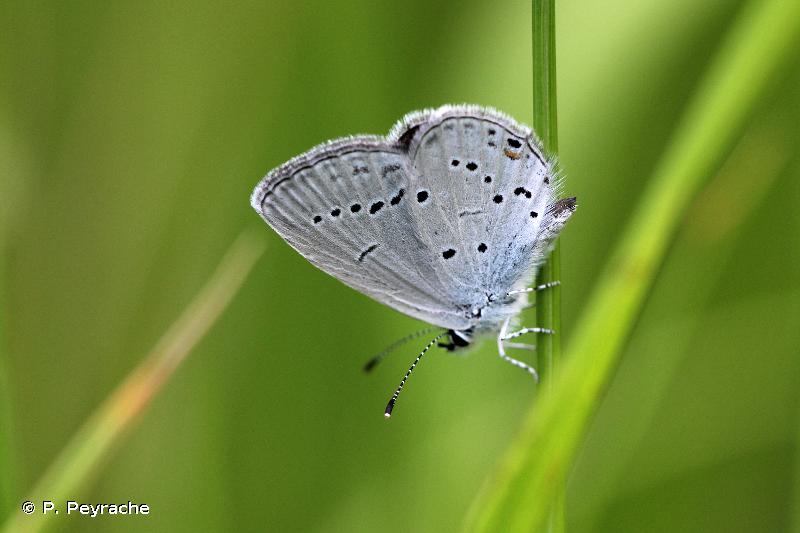
| Author : P. Peyrache |
 |
To get the picture, please visit:
pascaldgp@yahoo.fr
Any reuse of one or more photographs on this site is subject to an authorization request from the author.
Link to the Code of Intellectual Property (Legifrance)
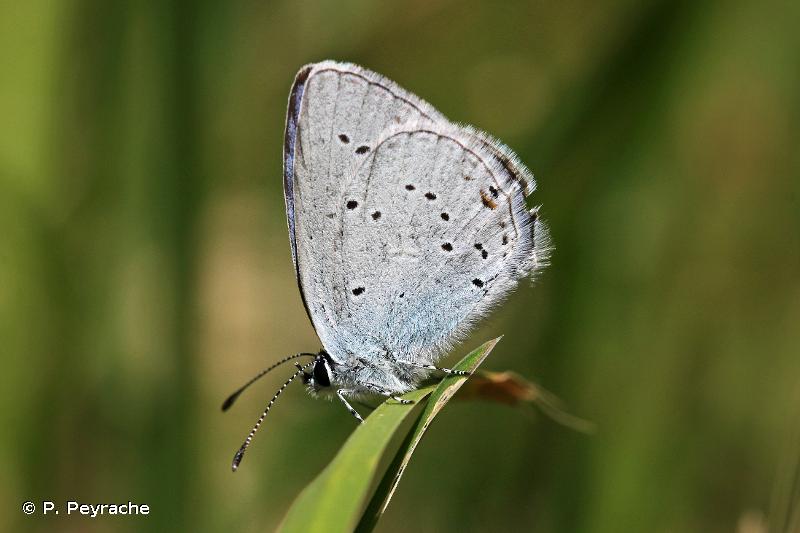
| Author : P. Peyrache |
 |
To get the picture, please visit:
pascaldgp@yahoo.fr
Any reuse of one or more photographs on this site is subject to an authorization request from the author.
Link to the Code of Intellectual Property (Legifrance)
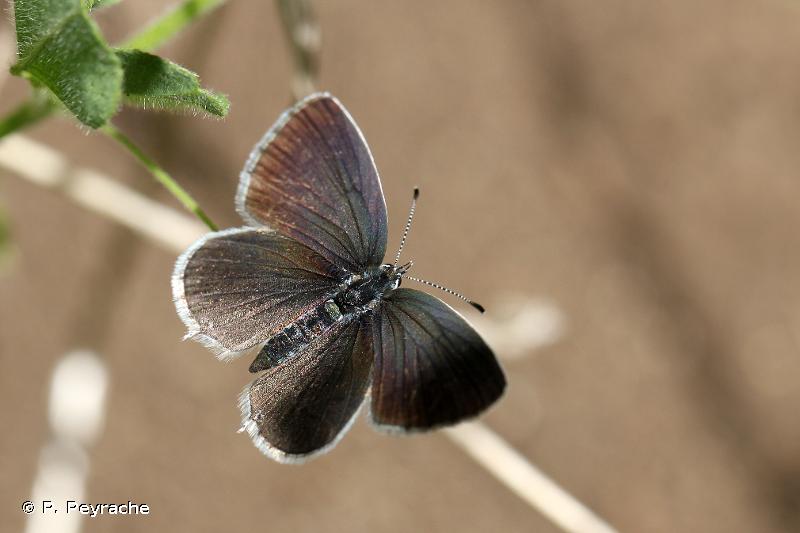
| Author : P. Peyrache |
 |
Any reuse of one or more photographs on this site is subject to an authorization request from the author.
Link to the Code of Intellectual Property (Legifrance)
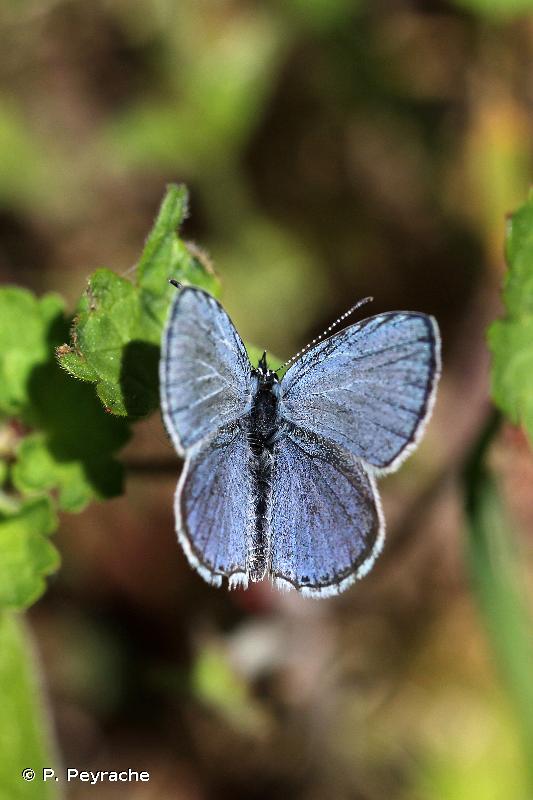
| Author : P. Peyrache |
 |
To get the picture, please visit:
pascaldgp@yahoo.fr
Any reuse of one or more photographs on this site is subject to an authorization request from the author.
Link to the Code of Intellectual Property (Legifrance)
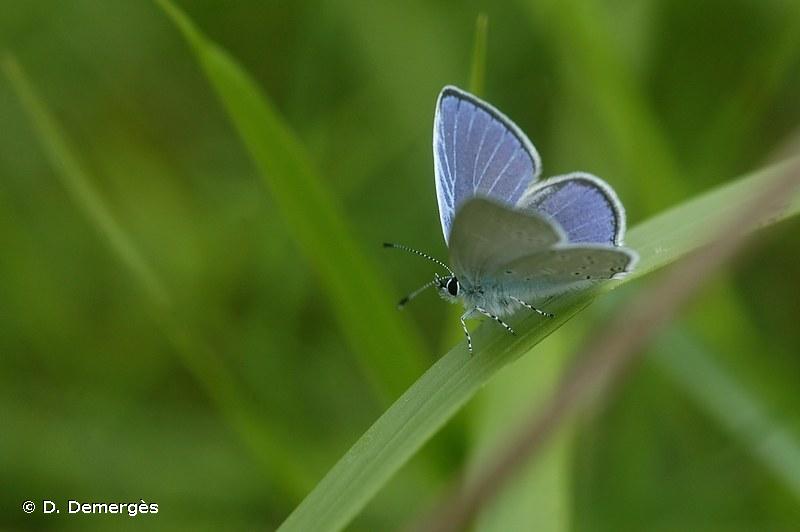
| Author : D. Demergès |
 |
To get the picture, please visit:
david.demerges@wanadoo.fr
Despite the Creative Commons license, please inform the author of the use which will be made of his photo

| Author : S. Wroza |
 |
Despite the Creative Commons license, please inform the author of the use which will be made of his photo

| Author : S. Wroza |
 |
Despite the Creative Commons license, please inform the author of the use which will be made of his photo
Taille :
Adulte : 19 - 24 mm
Diagnose :
Papillon de petite taille et de couleur bleu violacé sur le dessus du mâle et brun sombre chez la femelle. Le dessous est gris clair avec une série de points noirs cerclés de blanc. Il possède une queue discrète sur le bas de l'aile postérieure avec parfois une petite tâche orangé. La chenille est de couleur verte avec de poils clairs et fins.
Détermination :
L'adulte est moyennement difficile à reconnaître.
Espèces proches :
Confusion possible avec l'Azuré du trèfle qui possède des taches submarginales oranges toujours présentes et bien visibles.
Période d'observation :
L'adulte est visible d'avril à septembre selon les régions.
Biologie-éthologie :
En France, l'Argus de la faucille réalise deux générations par an. La chenille se nourrit des feuilles de la Luzerne lupuline ou Minette. On la trouve parfois sur d'autres légumineuses. Les mâles adultes font preuve de comportements territoriaux et occupent un perchoir dans l'attente d'une femelle.
Biogéographie et écologie :
Cette espèce est présente d'Europe méridionale jusqu'en Asie mineure et au sud de la Sibérie. Elle privilégie les milieux bien ensoleillés comme les pelouses sèches et les prairies. On la trouve du niveau de la mer jusqu'à 1500 m d'altitude.
D'après
Lafranchis, T., Jutzeler, D., Guilloson, J.-Y., Kan, P., Kan, B. 2015. La vie des papillons. Editions Diatheo. Montpellier. 751 pp.
Lafranchis, T. 2016. Papillons de France. Editions Diatheo. Montpellier. 351 pp.
J. Ichter(),2019
Continental
Metropolitan France
Overseas
Marine
Metropolitan France
Overseas
The map presents a summary at the 10 x 10 km grid of the observation data for the species transmitted to the SINP. These data have been subjected to validation filters.
The map presents a reference distribution layer of the species at the scale of departments and marine sectors. The presence and absence data were established by expertise within a network of partners. This reference distribution is used in the validation process of the SINP data at the INPN level.
Corresponds to a report on the basis of at least one observation proved within a period of 10 years (20 years for little-known invertebrates) preceding the year and no presumption of extinction since obtaining the last data nor doubt on reproductive and implemented nature of this population. For migratory species, the presence indicated concerns areas of reproduction.
This status is based on one or more of the following criteria:
This point covers the absence, more difficult by nature to demonstrate than presence. This status is based on one or more of the following criteria:
This status must be assigned to a department in which the presence of the species is casual.
Particular case of absence due to a proven extinction less than a half century ago (older disappearances are treated as "no probable or definite").
In the state of knowledge, we can not comment on the presence or absence in the current department. This is the default status when not comprised in one of the previous categories or whenever there is doubt.
The map shows the global distribution of the species based on GBIF data (Global Biodiversity Information Facility).
